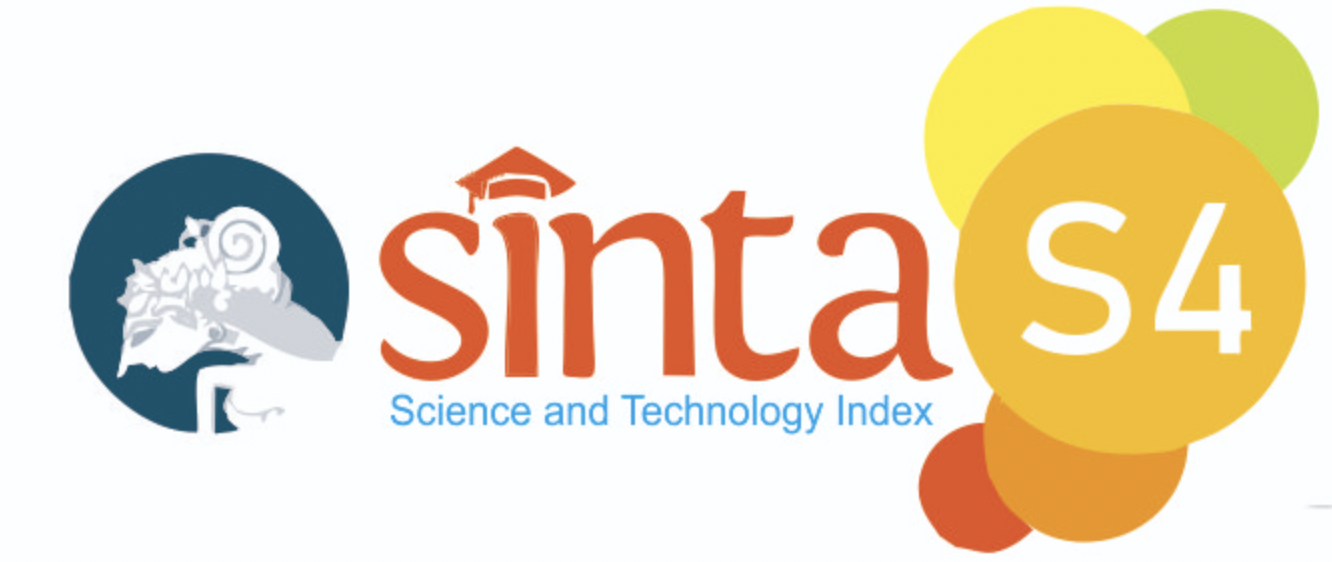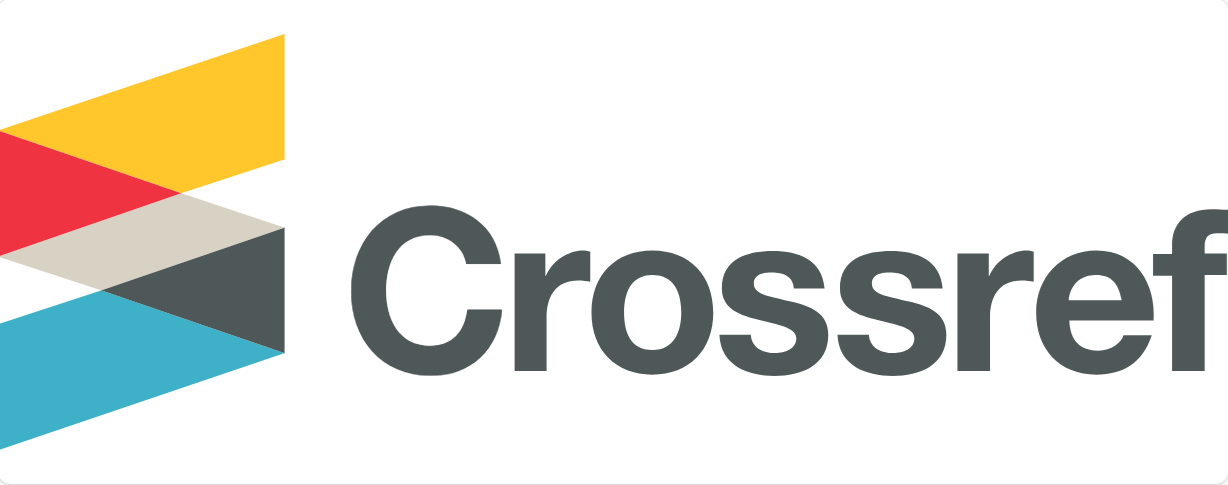Abstract
This article reports the study of the use of WhatsApp Group (WAG) among primary school students who utilize the platform as a digital heterotopia. The study investigated: How is WAG used as a platform for sharing and exchanging YouTube content among primary school students?; How WAG is represented as a digital space for during their practices of sharing and exchanging YouTube content? The purpose of this research is to explore information dissemination activities, especially YouTube content WAG as a digital space for information sharing has become a heterotopia digital space. This qualitative research was conducted in Surabaya, Malang, Kediri, and Jember. Data was collected from indepth interview of 50 primary school students. This study found that firstly, the students do not only use their WAG to disseminate YouTube content for academic purposes, but also to turn WAG as a space of digital leisure. Children as the iGeneration immerse themselves into the cyberspace to interesting videos on YouTube, as well as game-related content which they share to their friends through WAG. Secondly, the existence of WAG for these students does not only serve as a space for educational purposes – exchanging academic content, but also as a space for social interaction, self-representation and con-structing self-identity. WAG among primary school students is a digital heterotopia as they can use it as a space for sharing and exchanging various YouTube content for their social loop, and social validation from their digital peers.
Bahasa Abstract
Penelitian ini membahas penyebaran konten-konten YouTube di kalangan anak-anak dan bagaimana WhatsApp Group (WAG) telah berkembang menjadi ruang digital heterotopia. Permasalahan yang dikaji adalah: (1) Bagaimana WhatsApp Group (WAG) dimanfaatkan sebagai media untuk membagi dan bertukar konten-konten YouTube di kalangan anak-anak SD? dan (2) Bagaimana representasi WAG sebagai ruang digital bagi anak-anak SD ketika mereka memanfaatkan konten video YouTube dalam WAG? Studi ini dilakukan di kota Surabaya, Malang, Kediri dan Jember. Dalam studi kualitatif ini 50 siswa SD diwawancarai secara mendalam. Kajian ini menemukan: Pertama, siswa SD tidak hanya memanfaatkan WAG untuk menyebarkan konten-konten YouTube yang berisi tugas-tugas akademik, tetapi juga menjadikan WAG sebagai ruang untuk digital leisure. Sebagai iGenera-tion, siswa SD menelusur dunia maya untuk menemukan konten YouTube yang unik dan spektakuler, serta cara memainkan game yang kemudian di-share dalam WAG. Kedua, bagi siswa SD, keberadaan WAG tidak hanya sebagai ruang untuk memberikan sumber informasi akademik dan bertukar pendapat tentang tugas sekolah, tetapi juga sebagai ruang interaksi sosial, ruang representasi diri dan ruang membangun identitas diri. WAG di kalangan anak-anak SD merupakan digital heterotopia karena mereka dapat memanfaatkannya untuk menyebarkan konten-konten YouTube, sehingga mereka mendapatkan tiket masuk dalam lingkungan pergaulan, dan pengakuan sosial dari lingkungan digital peergroup- nya.
References
- Adam, I. (2019). Digital leisure engagement and concerns among inbound tourists in Ghana. Journal of Outdoor Recreation and Tourism, 26,13–22. https://doi.org/10.1016/j.jort.2019.03.001
- Aharony, N., & Zion, A. (2019). Effects of WhatsApp’s Use on Working Memory Performance Among Youth. Journal of Educational Computing Research, 57(1), 226–245. https://doi.org/10.1177/0735633117749431
- Ahearne, C., Dilworth, S., Rollings, R., Livingstone, V., & Murray, D. (2015). Touch-screen technology usage in toddlers. Arch Dis Child, 0, 1–3. https://doi.org/10.1136/archdischild-2015-309278
- Amado Puentes, A., Villar Rodríguez, N., Pereiro Fernández, S., & García Alonso, L. (2020). Suitability and validation of WhatsAppTM as a method of communicating with family. Anales de Pediatria, 92(5), 300-302. https://doi.org/10.1016/j.anpedi.2019.02.010
- Ariani, A., Luh, N., Hm, P., Aditya, R., Endriyani, N., & Niati, R. (2017). Effects of Playing with Gadget on Elementary School Children in Urban and Rural Environment. Advance in Health Sciences Research (AHSR), 2, 22–27. https://doi.org/10.2991/hsic-17.2017.5
- Assathiany, R., Guery, E., Caron, F. M., Cheymol, J., Picherot, G., & Foucaud, P. (2018). Children and screens: A survey by French pediatricians. Archives de Pediatrie, 25, 84–88. https://doi.org/10.1016/j.arcped.2017.11.001
- Bahmanteymouri, E., & Haghighi, F. (2020). Airbnb as an ephemeral space: Towards an analysis of a digital heterotopia. In S. Ferdinan, I. Souch & D. Wesselman (Eds.), Heterotopia and Globalisation in the Twenty-First Century (pp. 243-244). London: Routledge. https://doi.org/10.4324/9780429290732
- Binti, T., Tahir, M., Hashimah, N., & Hassain, A. (2016). Children and social media usage: Malaysian initial perspective. 2016 3rd International Conference on Computer and Information Sciences (ICCOINS), 143–147. https://doi.org/10.1109/ICCOINS.2016.7783204
- Blair, S. L., Claster, P. N., & Claster, S. M. (2015). Technology and Youth: Growing Up in a Digital World. In S. L. Blair, P. N. Claster, & S. M. Claster (Eds.), Technology and Youth: Growing Up in a Digital World (Vol. 19, p. iii). Bingley: Emerald Group Publishing Limited. https://doi.org/10.1108/S1537-466120150000019024
- Carnicelli, S., McGillivray, D., & McPherson, G. (2016). Digital leisure cultures: Critical perspectives. London: Routledge. https://doi.org/10.4324/9781315666600
- Chaudron, S. (2015). Young Children (0-8) and digital technology: A qualitative exploratory study across seven countries. Technical Report by the Joint Research Centre of the European Commission. Luxemburg: Publications Office of the European Union.
- Childwise (2017). Monitor report 2017: Children’s media use and purchasing. United Kingdom: Childwise.
- Christensen, P., Mikkelsen, M. R., Nielsen, T. A. S., & Harder, H. (2011). Children, mobility, and space: Using gps and mobile phone technologies in ethnographic research. Journal of Mixed Methods Research, 5(3), 227-236. https://doi.org/10.1177/1558689811406121
- Costa-Sánchez, C., & Guerrero-Pico, M. (2020). What Is WhatsApp for? Developing Transmedia Skills and Informal Learning Strategies Through the Use of WhatsApp—A Case Study with Teenagers From Spain. Social Media and Society, 6(3). https://doi.org/10.1177/2056305120942886
- Ersoy, M. (2019). Social Media and Children. In G. Sarı (Ed.), Handbook of research on children’s consumption of Digital Media. Pennsylvania: IGI Global.
- Foucault, M. (1967/2008). Of other spaces (L. De Cauter &M. Dehaene, Trans.). In M. Dehaene &L. De Cauter (Eds.), Heterotopia and the city: Public space in a postcivil society (pp. 13–29). London, England: Routledge.
- Foucault, M. (2017). Of other spaces. In J. Levy (Ed), The City: Critical Essays in Human Geography (pp.281-283). London: Routledge.
- Foucault, M. (2018). The order of things: An archaeology of the human sciences. London: Routledge. https://doi.org/10.4324/9781315660301
- Grimley, M. (2012). Digital leisure-time activities, cognition, learning behaviour and information literacy: What are our children learning? E-Learning and Digital Media, 9(10), 19-28. https://doi.org/10.2304/elea.2012.9.1.13
- Haddon, L. (2013). Mobile media and children. Mobile Media and Communication, 1(1), 89-95. https://doi.org/10.1177/2050157912459504
- Hadjipanayis, A., Efstathiou, E., Altorjai, P., Stiris, T., & Valiulis, A. (2019). Social media and children: what is the paediatrician’s role? European Journal of Pediatrics, 178, 1605–1612. https://doi.org/10.1007/s00431-019-03458-w
- Hadlington, L., White, H., & Curtis, S. (2019). “ I cannot live without my [ tablet ] ” : Children ’ s experiences of using tablet technology within the home. Computers in Human Behavior, 94, 19–24. https://doi.org/10.1016/j.chb.2018.12.043
- Harris, A., & Johns, A. (2020). Youth, social cohesion and digital life: From risk and resilience to a global digital citizenship approach. Journal of Sociology, 1(1), 1-18 https://doi.org/10.1177/1440783320919173
- Holland, M. (2016). How YouTube Developed into a Successful Platform for User-Generated Content. Elon Journal of Undergraduate Research in Communications, 7(1),52-60. http://www.inquiriesjournal.com/a?id=1477
- Kabali, H. K., Irigoyen, M. M., Nunez-davis, R., Budacki, J. G., & Mohanty, S. H. (2015). Exposure and use of mobile media devices by young children. Pediatrics, 136(6), 1044–1050. https://doi.org/10.1542/peds.2015-2151
- Katrini, E. (2018). Sharing culture: On definitions, values, and emergence. Sociological Review, 66(2), 425-446. https://doi.org/10.1177/0038026118758550
- Kirkorian, H. L. (2016). Toddlers’ word learning from contingent and non-contingent video on touchscreens. Child Development, 87, 405–413. https://doi.org/doi.org/10.1111/cdev.12508
- Komalova, L. (2018). Social Network Sites as Digital heterotopias: Textual Content and Speech Behavior Perception. In DA. Alexandrov, AV. Boukhanovsky AV. Chugunov, Y. Kabanov, & O.Koltsova (Eds) Digital Transformation and Global Society. DTGS 2018. Communications in Computer and Information Science (pp. 43-54). Cham: Springer. https://doi.org/10.1007/978-3-030-02846-6_4
- Layland, E. K., Hodge, C. J., Glaza, M., & Peets, J. O. (2020). Rethinking leisure time use metrics: Greater diversity in shared sibling leisure is associated with higher relationship quality during emerging adulthood. Journal of Social and Personal Relationships, 37(2), 516–537. https://doi.org/10.1177/0265407519867771
- Levine, L. E., Waite, B. M., Bowman, L. L., & Kachinsky, K. (2018). Mobile media use by infants and toddlers. Computers in Human Behavior, 94(September 2018), 92–99. https://doi.org/10.1016/j.chb.2018.12.045
- Liyana, S., & Noorhidawati, A. (2014). How graduate students seek for information: Convenience or guaranteed result?. Malaysian Journal of Library & Information Science, 19(2), 1-15.
- Livingstone, S. (2002). Young People and New Media: Childhood and the Changing Media Environment. London: SageUK.
- Ljungberg, E. (2019). Media practices in the making of an “other space”: Communicating inclusion, exclusion, and belonging in a controversial heterotopia. New Media & Society, 22(12), 2166-2182. https://doi.org/10.1177/1461444819888399
- Mascheroni, G., & Ólafsson, K. (2016). The mobile Internet: Access, use, opportunities and divides among European children. New Media and Society, 18(8), 1657-1679. https://doi.org/10.1177/1461444814567986
- Matassi, M., Boczkowski, P. J., & Mitchelstein, E. (2019). Domesticating WhatsApp: Family, friends, work, and study in everyday communication. New Media and Society, 21(10), 2183-2200. https://doi.org/10.1177/1461444819841890
- McNamee, S. (2000). Foucault’s Heterotopia and Children’s Everyday Lives. Childhood, 7(4), 479–492. https://doi.org/10.1177/0907568200007004006
- Miscione, G., & Kavanagh, D. (2015). Bitcoin and the Blockchain: A Coup D’’tat in Digital heterotopia? SSRN Electronic Journal, 23(15), 1-27. https://doi.org/10.2139/ssrn.2624922
- Moghavvemi, S., Sulaiman, A., Jaafar, N. I., & Kasem, N. (2018). Social media as a complementary learning tool for teaching and learning: The case of YouTube. International Journal of Management Education, 16(1), 37-42. https://doi.org/10.1016/j.ijme.2017.12.001
- Morgan, N. (2020). Children as digital citizens: Closing the gap on parental engagement. Information Technology, Education and Society, 17(1), 41–54. https://doi.org/https://doi.org/10.7459/ites/17.1.04
- Neumann, M. M. (2018). Using tablets and apps to enhance emergent literacy skills in young children. Early Childhood Research Quarterly, 42(1st Quarter 2018), 239–246. https://doi.org/10.1016/j.ecresq.2017.10.006
- Ofcom. (2016). Children and parents: media use and attitudes report, (November). United Kingdom: Ofcom.
- Potter, A., & Steemers, J. (2017). Children’s television in transition: Policies, platforms and production. Media International Australia, 163(1), 6-12. https://doi.org/10.1177/1329878X17693936
- Raman, S., Guerrero-duby, S., Mccullough, J. L., Brown, M., Ostrowski-delahanty, S., Langkamp, D., & Duby, J. C. (2017). Screen exposure during daily routines and a young child ’ s risk for having social-emotional delay. Clinical Pediatrics, 56(13), 1244–1253. https://doi.org/10.1177/0009922816684600
- Rangaswamy, N., & Arora, P. (2016). The mobile internet in the wild and every day: Digital leisure in the slums of urban India. International Journal of Cultural Studies, 19(6), 611-626. https://doi.org/10.1177/1367877915576538
- Rosen, L. D. (2010). Rewired: Understanding the iGeneration and the way they learn. London: St. Martin's Griffin.
- Rowlands, I., Nicholas, D., Williams, P., Huntington, P., Fieldhouse, M., Gunter, B., Withey, R., Jamali, H.R., Dobrowolski, T. and Tenopir, C. (2008). The Google generation: the information behaviour of the researcher of the future. Aslib Proceedings, 60(4), 290-310. https://doi.org/10.1108/00012530810887953
- Sánchez-Navarro, J., & Aranda, D. (2013). Messenger and social network sites as tools for sociability, leisure and informal learning for Spanish young people. European Journal of Communication, 28(1), 67-75. https://doi.org/10.1177/0267323111432411
- Spracklen, K. (2015). Digital Leisure, the Internet and Popular Culture. Leeds : Palgrave Macmillan. https://doi.org/10.1057/9781137405876
- Sugihartati, R., & Yuwinanto, H. P. (2019). Dampak Sosial Penggunaan Gawai (Mobiles Phones) di Kalangan Anak-Anak serta Keterlibatan Orang Tua dan Sekolah dalam Pengembangan Literasi Digital. Laporan Penelitian. Direktorat Riset dan Pengabdian Masyarakat Direktorat Jenderal Riset dan Pengembangan Kementerian Riset, Teknologi, dan Pendidikan Tinggi. (Unpublished Work)
- Thestrup, K. (2019). Digital citizens: How preschool teachers and children communities in a digital and global world. In C. Gray & I. Palaiologou (Eds.), Early learning in the digital age (pp. 136–148). California, USA: Sage Publications.
- Tsai, C.-W., Shen, P.-D., & Fan, Y.-T. (2015). Investigation of Student Learning Assistance through Online Academic Help-Seeking and a Mobile Application. International Journal of E-Adoption, 7(1), 1-16. https://doi.org/10.4018/ijea.2015010101
- Tur-Viñes, V., Núñez-Gómez, P., & González-Río, M. J. (2018). Kid influencers on YouTube. A space for responsibility. Revista Latina de Comunicacion Social, 13(3), 13-20. https://doi.org/10.4185/RLCS-2018-1303
- Vernon, L. (2019). Time-use for the iGeneration: A person-centered approach. Human Behavior and Emerging Technologies, 1(2), 91–102. https://doi.org/https://doi.org/10.1002/hbe2.146
- Witteborn, S. (2014). Forced migrants, emotive practice and digital heterotopia. Crossings, 5(1), 73-85. https://doi.org/10.1386/cjmc.5.1.73_1
- Zhao, S., Grasmuck, S., & Martin, J. (2008). Identity construction on Facebook: Digital empowerment in anchored relationships. Computers in Human Behavior, 24(5), 1816-1836. https://doi.org/10.1016/j.chb.2008.02.012
- Zilka, G. (2018). Why do children and adolescents consume so much media? An examination based on self-determination theory. Global Media Journal, 24, 100-110. https://doi.org/10.1016/j.psychsport.2016.01.009
Recommended Citation
Sugihartati, Rahma; Egalita, Nadia; and Wijaya, Arya
(2021)
"Whatsapp Group Sebagai Digital Heterotopia: Dari Sumber Informasi Digital Hingga Digital Leisure,"
Jurnal Ilmu Informasi, Perpustakaan dan Kearsipan: Vol. 23:
No.
1, Article 2.
DOI: 10.7454/JIPK.v23i1.002
Available at:
https://scholarhub.ui.ac.id/jipk/vol23/iss1/2
Included in
Archival Science Commons, Collection Development and Management Commons, Information Literacy Commons







